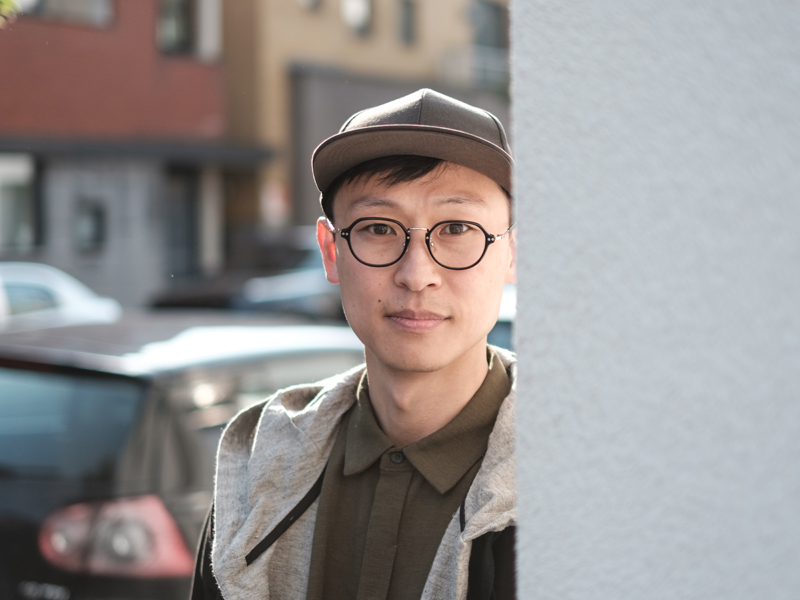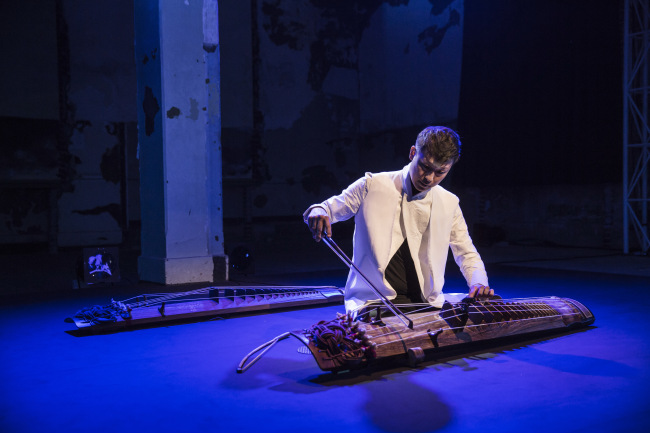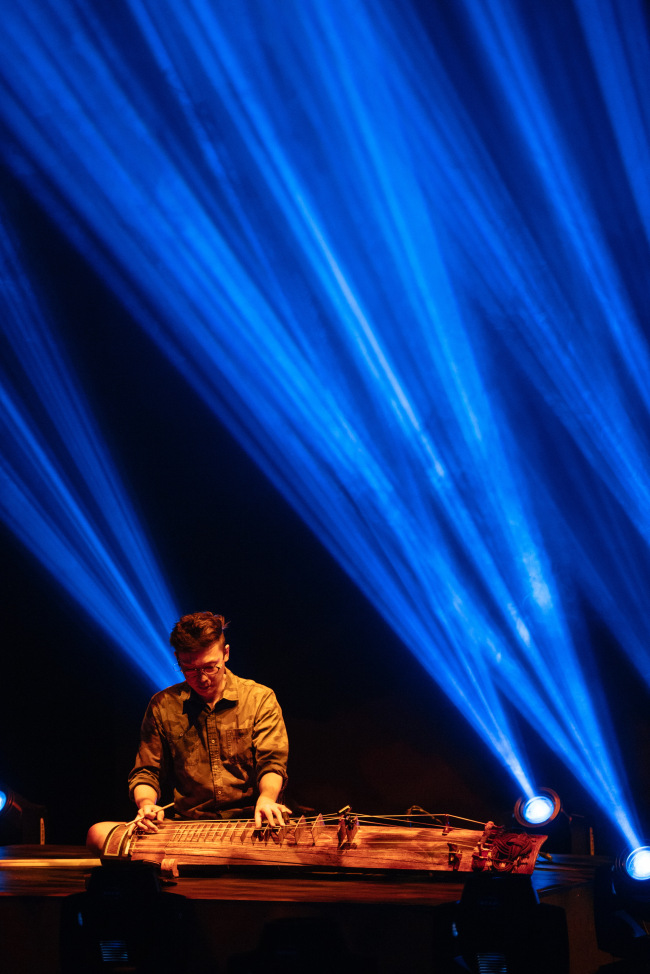[Herald Interview] Turning the tables on geomungo
Musician Park Woo-jae breaks conventions of traditional instrument
By Im Eun-byelPublished : May 6, 2019 - 17:00
Much like other Korean instruments, the geomungo is considered an instrument of the past -- one of royal court music and traditional compositions.
But here is a musician who has turned the tables on those preconceptions. Park Woo-jae literally turns the 2,000-year-old instrument around, opening up a whole new dimension to how it sounds.
After a five-year absence from performance in Korea, the musician recently held a solo recital at Seoul Namsan Gukakdang. In recent years, he has mostly performed in Europe.
“I don’t perform with the geomungo, I use the geomungo to create sounds,” Park said as he introduced himself to The Korea Herald during an interview a week before the recital.

It seems an odd statement, but Park had his reasons for using a word -- “iyong” or “use” -- not normally associated with playing an instrument. While geomungo is traditionally played with a suldae, a short bamboo stick, Park uses a violin bow. He turns the instrument around and draws the bow across its strings.
“The way I use the geomungo is different to the original way developed for making sounds out of it, so the word ‘use’ seems more appropriate than ‘play,’” he said. The 38-year-old musician is the founder of his own technique.
Park, a graduate of Korea National University of Arts, says he learned music as part of preparing for a college entrance exam.
When Park claimed that he would be focusing on his own style of geomungo playing as he entered the music profession, his parents and professors were taken aback at first. The standard path was to become a member of an orchestra, performing written scores.
“I wasn’t sure if I could live with that,” he said. “At school, I was a good student. But I did not have the DNA for traditional Korean music in me.”
Following his heart, Park stuck to what he did best -- creating new music. Now, all of Park’s performances feature exclusively his own music, contemporary and avant-garde takes on the geomungo.


When Park uses the instrument, it creates unexpected sounds. From just listening, it is hard to discern whether the sound is from a geomungo, a cello or sometimes even a guitar.
Park is also a member of ensemble Muto. Along with a graphic artist, interactive designer and an electronic dance music artist, the project art group is creating a new genre of performance art, combining media and art.
That background is reflected even in his solo recitals, in which he makes heavy use of special lighting effects. It takes the audience by surprise to see such modern technology being used for a traditional instrument performance. Visually speaking, Park’s recitals are almost like EDM shows.
Being a fan of contemporary dance, Park has created music for dancers too. His unique interpretations caught the ears of Europe’s dance scene, especially that of choreographer Sidi Larbi Cherkaoui from Belgium. He has produced the music for Cherkaoui’s dance performances in recent years.
Park asserts that he does not take a nationalistic approach to traditional Korean music. From his understanding, foreigners do not take much interest in the instrument itself.
“Just because my music is used for dance performances staged in Europe, it does not mean that the European dance scene or the public welcome geomungo and its music,” he said. “The choreographer was just looking for something new, and happened to come across my music.
“It is quite conventional of gugak musicians to speak as nationalists, to say traditional Korean music is the best. But I don’t agree,” Park said. “Of course, Korean music has its own beauty and is wonderful, but for us.”
Rather than working to promote traditional Korean music, Park pushes boundaries by experimenting with the possibilities of the instrument.
For instance, Park has formed a project team named Drunken Jungle with Japanese and Indian musicians, who also reinterpret their traditional music from a contemporary perspective.
This year will see Park performing more in Korea. He is currently the music director for the National Theater of Korea’s dance production “Next Step II” slated to be performed in late April. A new album is also on its way this fall.
By Im Eun-byel (silverstar@heraldcorp.com)

















![[KH Explains] Hyundai's full hybrid edge to pay off amid slow transition to pure EVs](http://res.heraldm.com/phpwas/restmb_idxmake.php?idx=652&simg=/content/image/2024/04/18/20240418050645_0.jpg&u=20240419100350)

![[Today’s K-pop] Zico drops snippet of collaboration with Jennie](http://res.heraldm.com/phpwas/restmb_idxmake.php?idx=642&simg=/content/image/2024/04/18/20240418050702_0.jpg&u=)